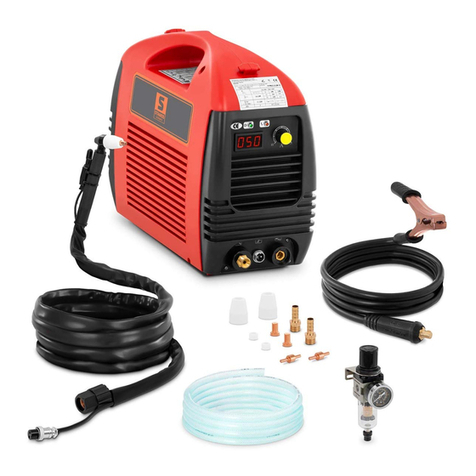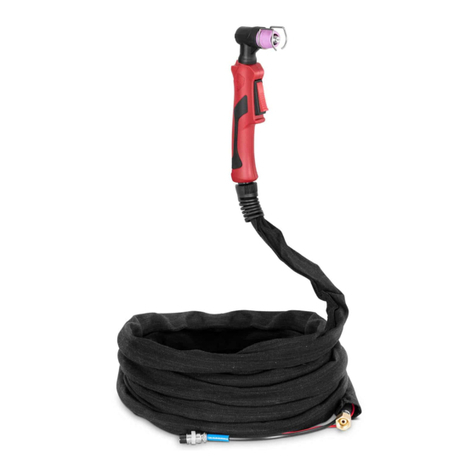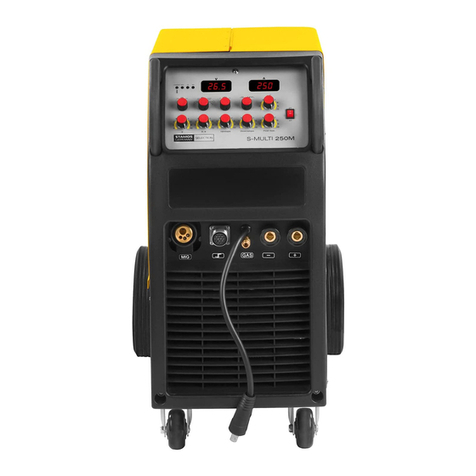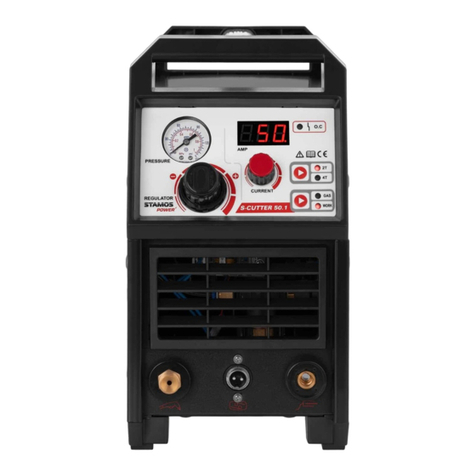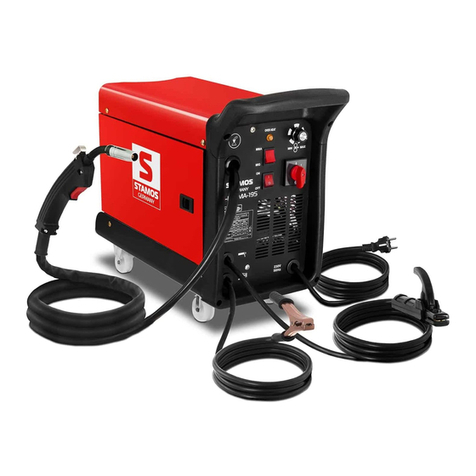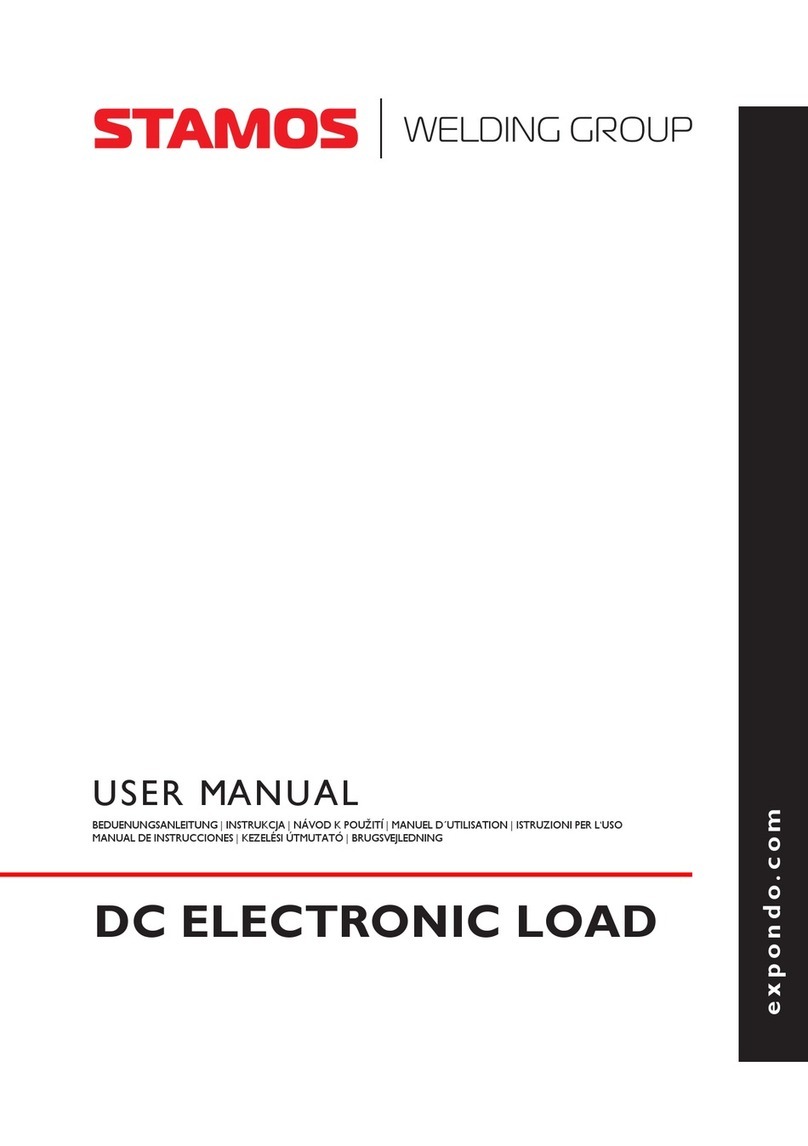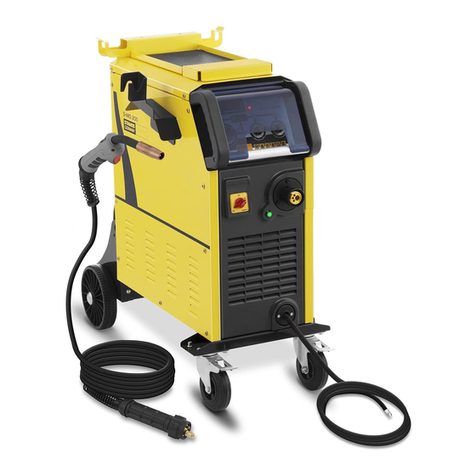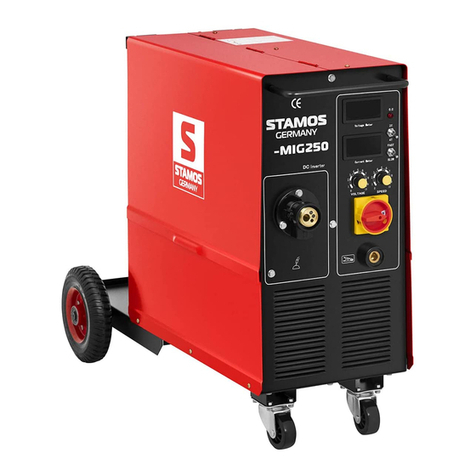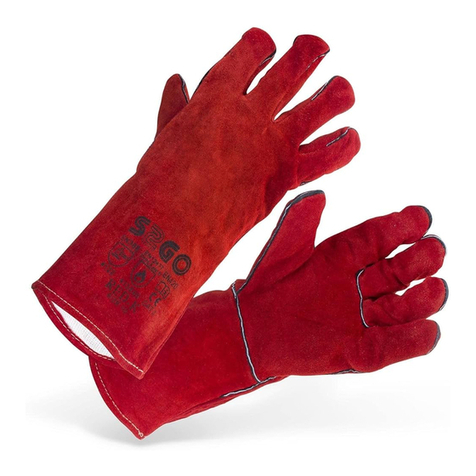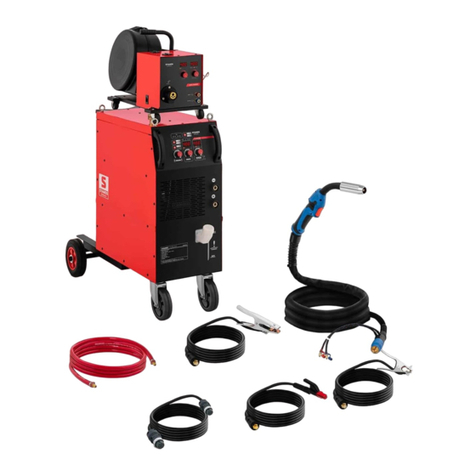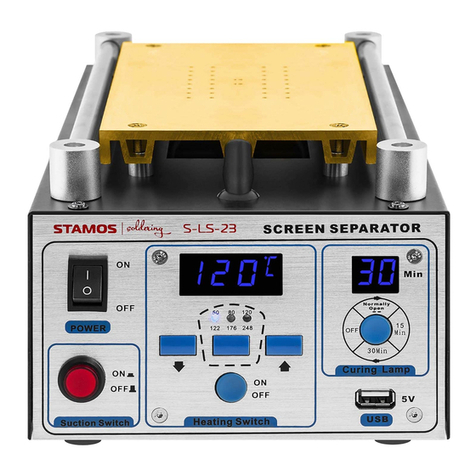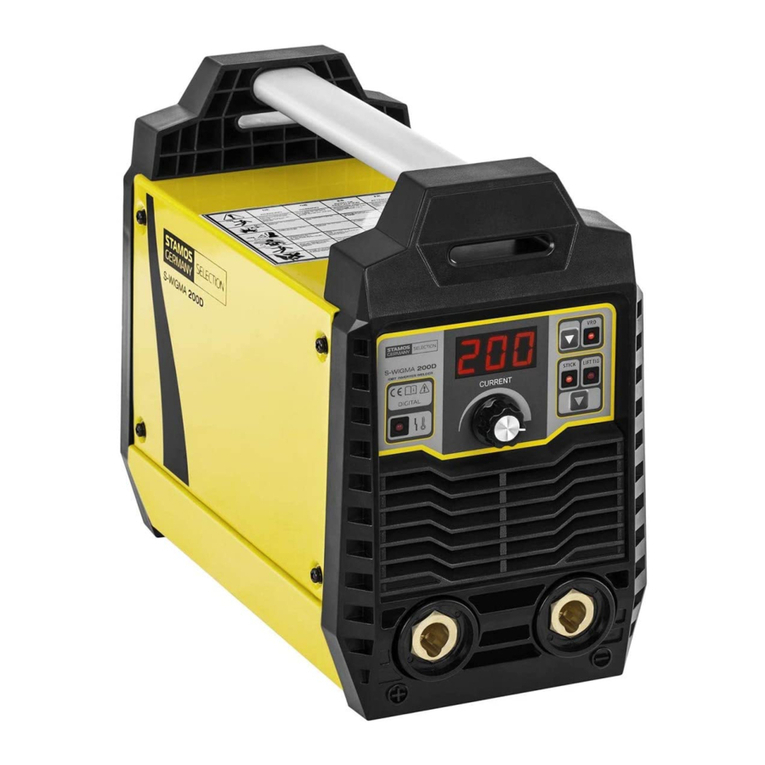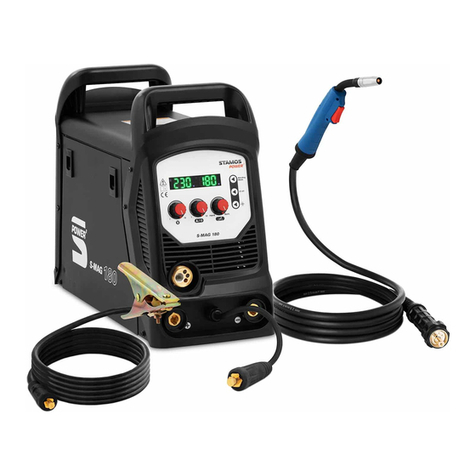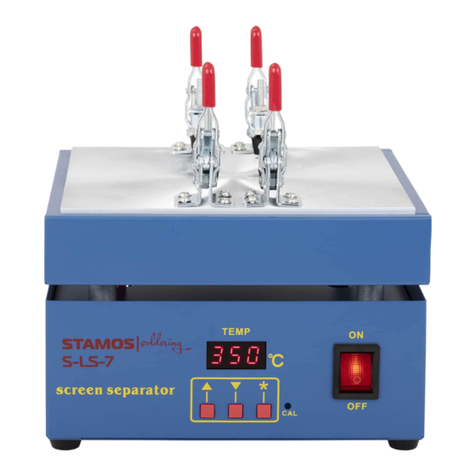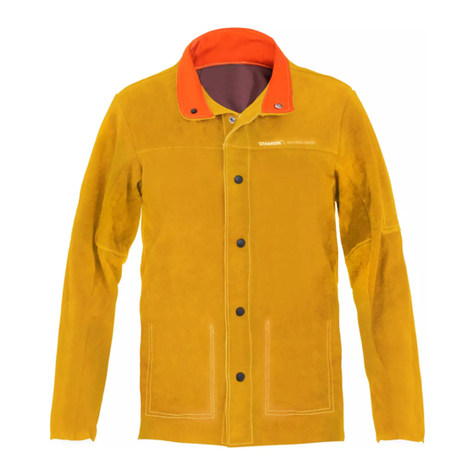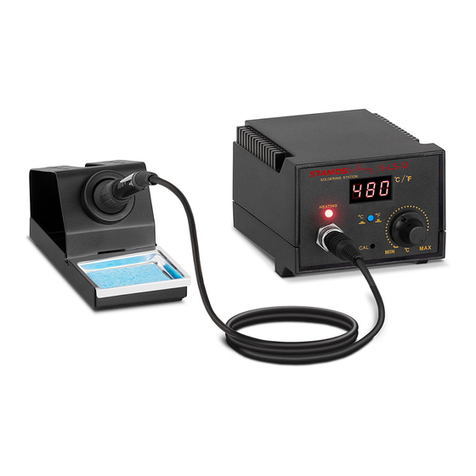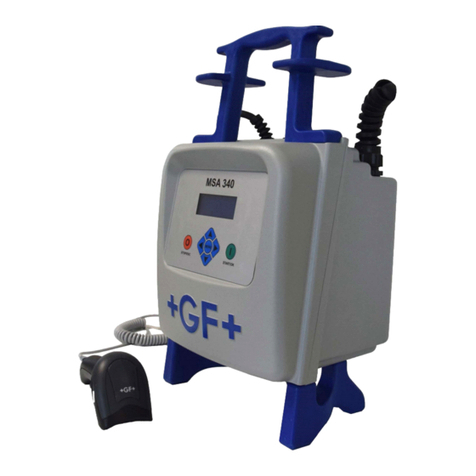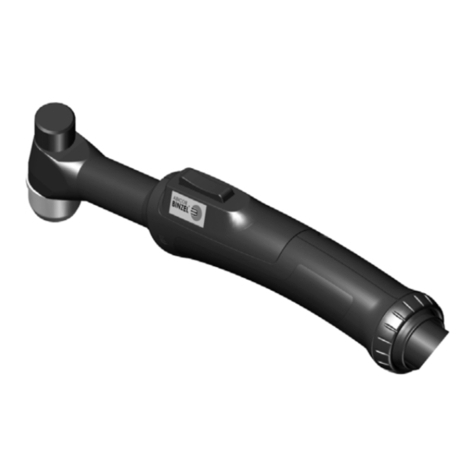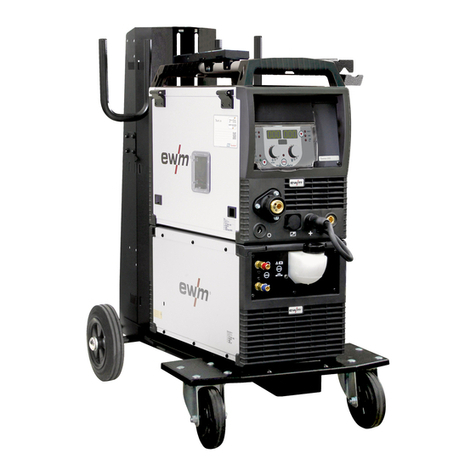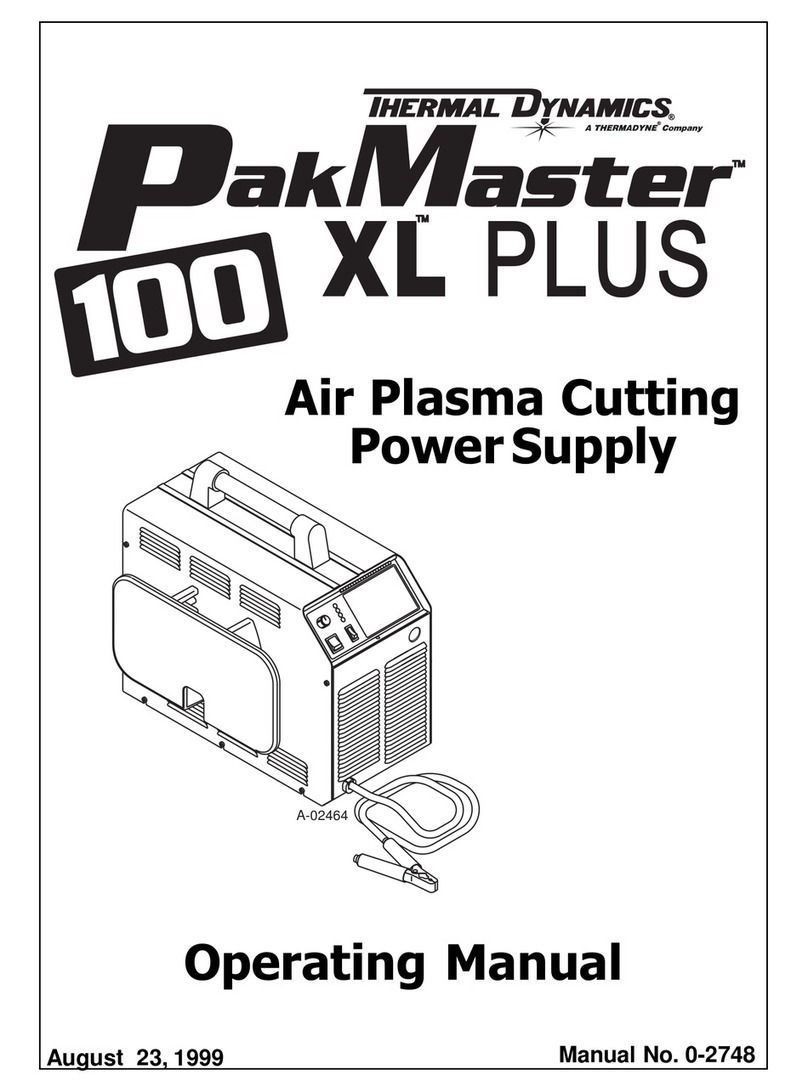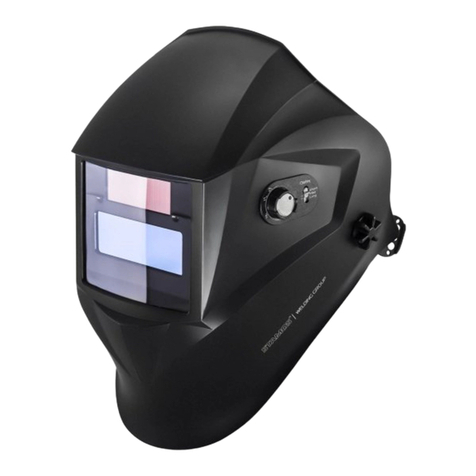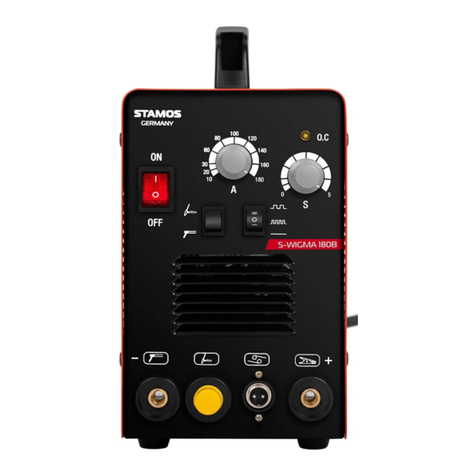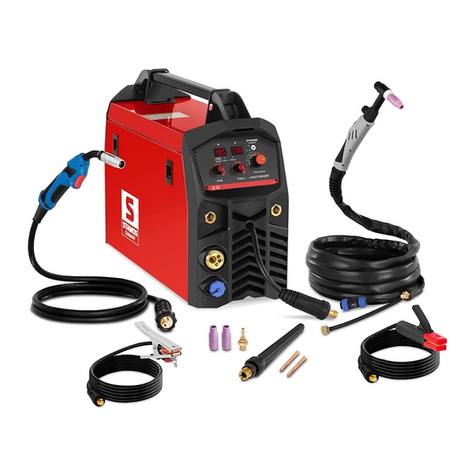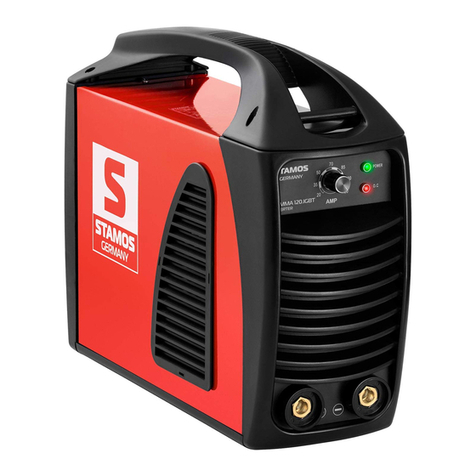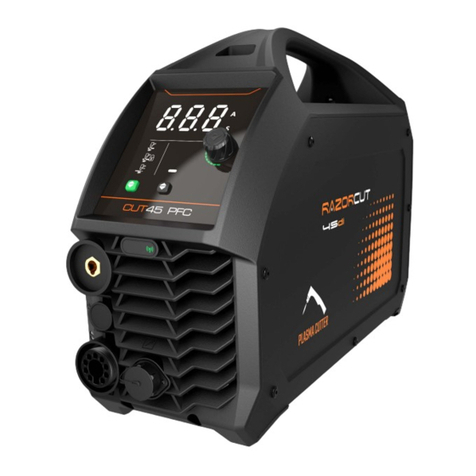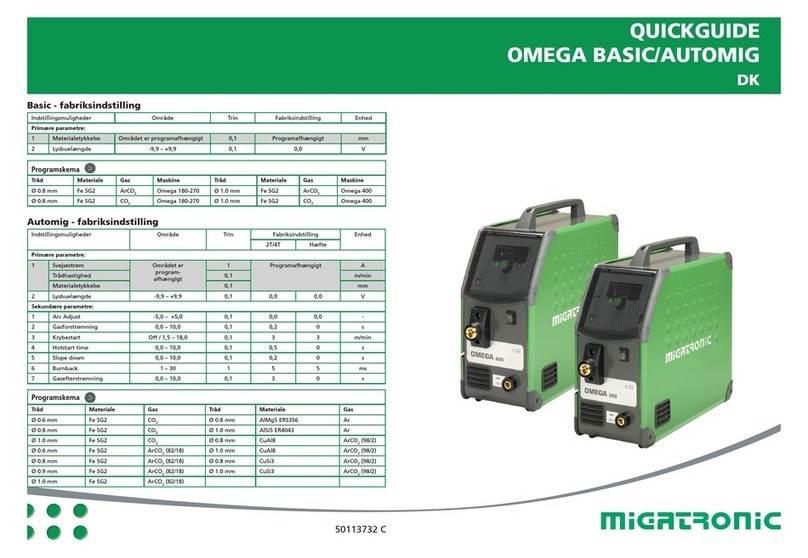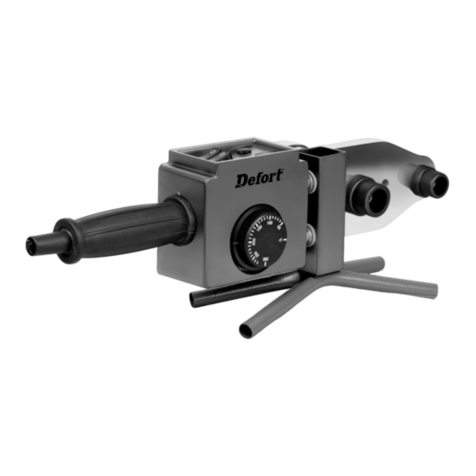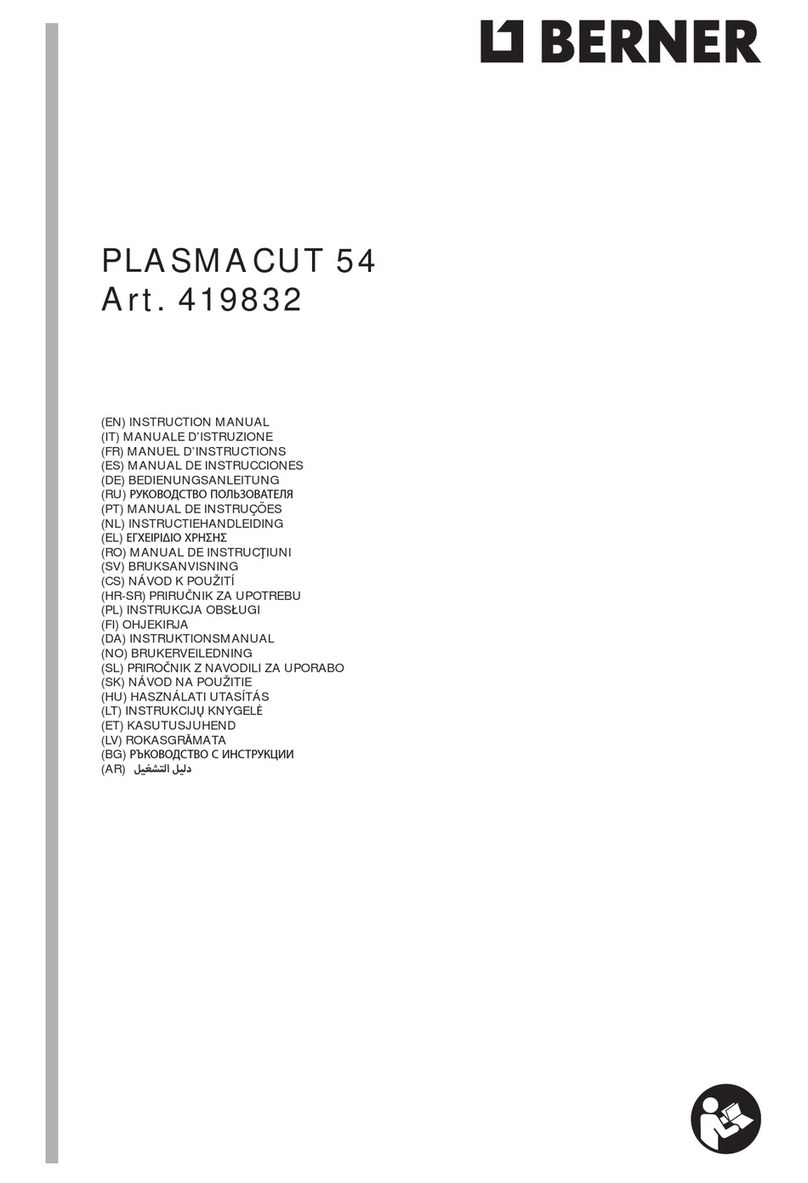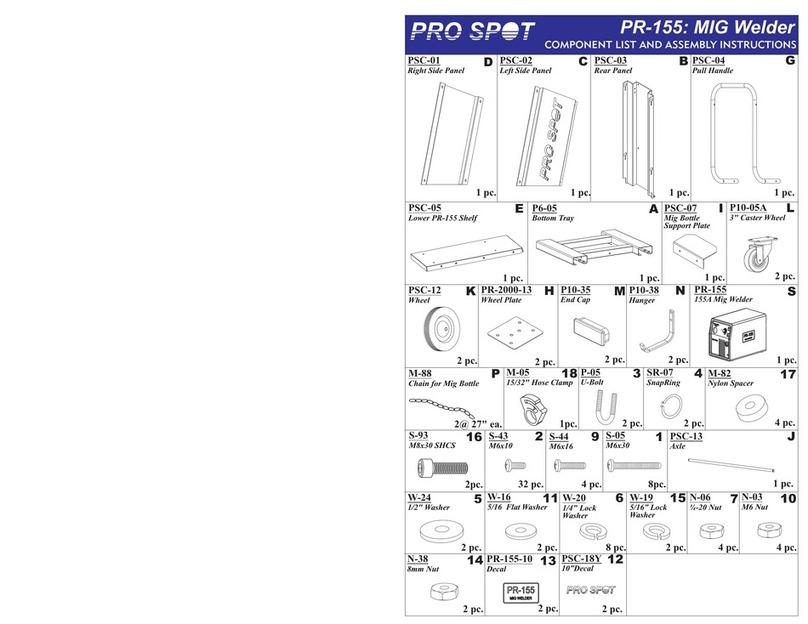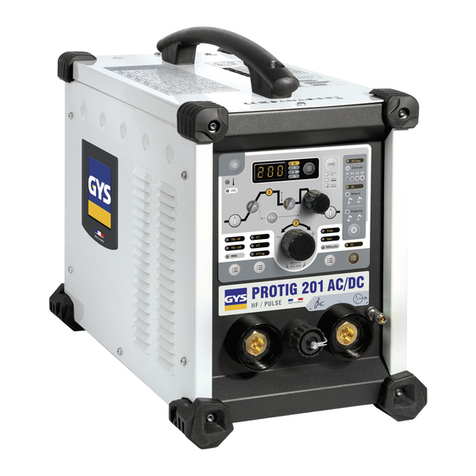
98
28.04.2022
EN
USER MANUAL
EN
The original operation manual is in German. Other
language versions are translations from German.
1. SAFETY OF USE
1.1. GENERAL NOTES
• Take care of your own safety, as well as the one of
third parties by reviewing and strictly following the
instructions which are included in the operating
manual of the device.
• Only qualied and skilled personnel can be allowed
to start, operate, maintain and repair the machine.
• The machine must never be operated contrary to its
intended purpose.
1.2. PREPARATION OF WELDING WORK SITE
WELDING OPERATIONS MAY CAUSE FIRE OR EXPLOSION
• Strictly follow the occupational health and safety
regulations applicable to welding operations and
make sure to provide appropriate re extinguishers
at the welding work site.
• Never carry out welding operations in ammable
locations posing the risk of material ignition.
• Never carry out welding operations in an atmosphere
containing ammable particles or vapours of
explosive substances.
• Remove all ammable materials within 12 meters
from the welding operations site and if removal is
not possible cover ammable materials with re
retardant covering.
• Use safety measures against sparks and glowing
particles of metal.
• Make sure that sparks or hot metal splinters do
not penetrate through the slots or openings in the
coverings, shields or protective screens.
• Do not weld tanks or barrels that contain or have
contained ammable substances. Do not weld in the
vicinity of such containers and barrels.
• Do not weld pressure vessels, pipes of pressurised
installations or pressure trays.
• Always ensure adequate ventilation.
• It is recommended to take a stable position prior to
welding.
1.3. PERSONAL PROTECTION EQUIPMENT
ELECTRIC ARC RADIATION CAN DAMAGE EYES AND SKIN
• When welding, wear clean, oil stain free protective
clothing made of non-ammable and non-
conductive material (leather, thick cotton), leather
gloves, high boots and protective hood.
• Before welding remove all ammable or explosive
items, such as propane butane lighters or matches.
• Use facial protection (helmet or shield) and eye
protection, with a lter featuring a shade level
matching the sight of the welder and the welding
current. The safety standards suggest colouring No.
9 (minimum No. 8) for each current below 300 A. A
lower colouring of the shield can be used if the arc is
covered by the workpiece.
• Always use approved safety glasses with side
protection under the helmet or any other cover.
• Use guards for the welding operations site in order
to protect other people from the blinding light
radiation or projections.
• Always wear earplugs or other hearing aids to
protect against excessive noise and to avoid spatter
entering the ears.
• Bystanders should be warned to not look at the arc.
• Welded materials can cause burns. Never touch the
welded components with parts of your body without
protection. When touching and moving welded
material, always use welding gloves and tongs.
1.4. PROTECTION AGAINST ELECTRIC SHOCK
ELECTRIC SHOCK CAN BE LETHAL
• The power cable must be connected to the nearest
socket and placed in a practical and secure position.
Positioning the cable negligently in the room and on
a surface which was not checked must be avoided as
it can lead to electrocution or re.
• Touching electrically charged elements can cause
electrocution or serious burns.
• Electrical arc and the working area are electrically
charged during the power ow.
• Input circuit and inner power circuit of the devices
are also under voltage charge when the power
supply is turned on.
• The elements under the voltage charge must not be
touched.
• Dry, insulated gloves without any holes and
protective clothing must be worn at all times.
• Insulation mats or other insulation layers, big enough
as not to allow for body contact with an object or the
oor, must be placed on the oor.
• The electrical arc should not be touched.
• The electrical power must be shut down prior to
cleaning the device or when performing an electrode
replacement.
• It must be checked if the earthing cable is properly
connected or the pin is connected correctly to the
earthed socket. Incorrect connection of the earthing
can cause life or health hazard.
• The power cables must be regularly checked for
damages or lack of insulation. Damaged cables must
be replaced. Negligent insulation repair can cause
death or serious injury.
The operation manual must be read carefully.
Never dispose of electrical equipment together
with household waste.
This machine conforms to CE declarations.
Use full body protective clothes.
ATTENTION! Wear protective gloves!
Safety goggles must be worn.
Protective footwear must be worn.
ATTENTION! Hot surface may cause burns!
ATTENTION! Risk of re or explosion!
ATTENTION! Harmful fumes, danger of poisoning.
Gases and vapours may be hazardous to health.
Welding gases and vapours are released during
welding. Inhalation of these substances may be
hazardous to health!
Use a welding mask with appropriate lter shading.
CAUTION! Harmful radiation of welding arc!
Do not touch part that are under voltage/power.
PLEASE NOTE!Drawings in this manual are for
illustration purposes only and in some details it may
dier from the actual product.
• The device must be turned o when it is not being
used.
• The cable mustn’t be wrapped around the body.
• A welded object must be properly grounded.
• Only equipment in good condition can be used.
• Damaged device elements must be repaired or
replaced. Safety belts must be used when working
at height.
• All tting and safety elements must be stored in one
place.
• When the device is switched on, the handle end must
be kept away from the body.
• The ground cable should be connected as close as
possible to the welded element (e.g. to a work table).
Security guidelines for work that constitutes a re hazard
Preparation of the building and premises for work that
constitutes a re hazard:
• removal of all ammable materials and waste from
rooms and premises where work will be carried out;
• moving any ammable objects and non-ammable
objects in ammable packages away to a safe
distance;
• materials that cannot be removed must be secured
against e.g. welding spatter by covering them with
e.g. metal sheets, drywall, etc.;
• check if materials or ammable objects in
surrounding rooms require protection;
• seal with non-ammable materials any openings in
installation, ventilation, etc. through holes located
near the place of work;
• secure electric cables, gas or installation pipes
covered with ammable insulation against welding
spatter if they are within the range of work that
constitutes a re hazard;
• check that the planned work will not be carried
out in rooms that were painted using ammable
substances or where other ammable substances
were used on the day of planned work.
Sparks may cause a re
Sparks produced by welding can cause res, explosions
and burns on exposed skin. During welding, it is necessary
to wear welding gloves and protective clothing. Remove or
secure any ammable materials and substances from the
place of work. Do not weld sealed containers or tanks in
which ammable liquids were stored. Such containers or
tanks must be rinsed before welding to remove ammable
liquids. Do not weld in the vicinity of ammable gas,
vapours or liquids. Fire equipment (blankets, dry powder
extinguisher or extinguishing foam) must be placed near
the workplace in an easily visible and reachable place.
THE DEVICE CAN STILL BE UNDER VOLTAGE UPON FEEDER
DISCONNECTION
• Voltage in the input capacitor must be checked upon
turning o the device and disconnecting it from
the power source. One must make sure that the
voltage value is equal to zero. Otherwise, the device
elements must not be touched.
1.5. GASES AND FUMES
PLEASE NOTE! GAS MAY BE LETHAL OR DANGEROUS TO
HUMAN HEALTH!
• When welding, ensure good ventilation. Avoid
inhalation of the gas.
• Chemical substances (lubricants, solvents) must be
removed from the surfaces of welded objects as they
burn and emit toxic smokes under the inuence of
temperature.
• The welding of galvanised objects is permitted only
when ecient ventilation is provided with ltration
and access to fresh air. Zinc fumes are very toxic, an
intoxication symptom is the so called zinc fever.
2. TECHNICAL SPECIFICATIONS
Product name FLUX Welder
Model S-MAG 120 FL
Voltage [V~] /Frequency [Hz] 230 / 50
Function FCAW
(Flux-Cored
Arc Welding)
Welding current range [A] 40 – 120
Welding current at 100% work cycle [A] 40
Welding current at 60% work cycle [A] 60
Welding current at 10% work cycle [A] 120
Power factor 0.8
Wire spool diameter [mm] 100
Thickness of the welded material [mm] 1 –3
Flux wire diameter [mm] ø 0.8 / 0.9
Protection rating IP IP21
Weight [kg] 17.75
3. OPERATION
3.1. GENERAL NOTES
• The device must be applied according to its purpose,
with observance of OHS regulations and restrictions
resulting from data included in the rating plate (IP
level, operation cycle, supply voltage, etc.).
• The machine must not be opened, as it will cause
warranty loss and, in addition, exploding, unshielded
elements can cause serious injuries.
• The producer does not bear any responsibility for
technical changes in the device or material losses
caused by the introduction of the said changes.
• In case of incorrect device operation, contact the
service centre.
• Louvers must not be shielded – the welder must
be positioned at 30 cm distance from objects
surrounding it.
• The welder must not be kept under your arm or near
to your body.
• The machine must not be installed in rooms with
aggressive environments, high dustiness and near
devices with high electromagnetic eld emission.
3.2. DEVICE STORAGE
• The machine must be protected against water and
moisture.
• The welder must not be positioned on heated
surfaces.
• The device must be stored in a dry and clean room.
3.3. CONNECTING THE DEVICE
3.3.1. CONNECTING THE POWER
• The power connection must be performed by a
qualied person. In addition, a suitably qualied
person should check whether the earthing and
electrical system are in accordance with the safety
regulations and if it works properly.
• The device must be placed near the work station.





